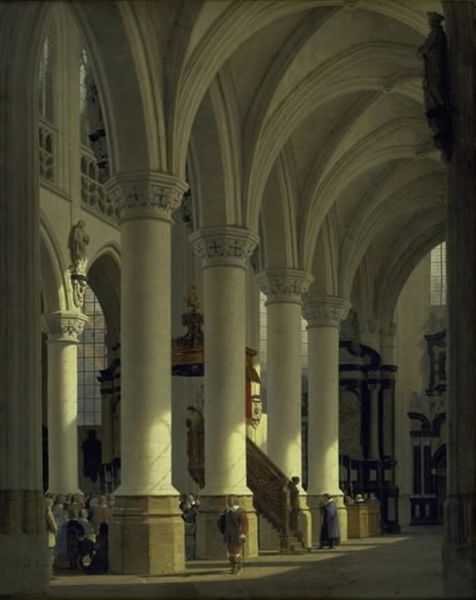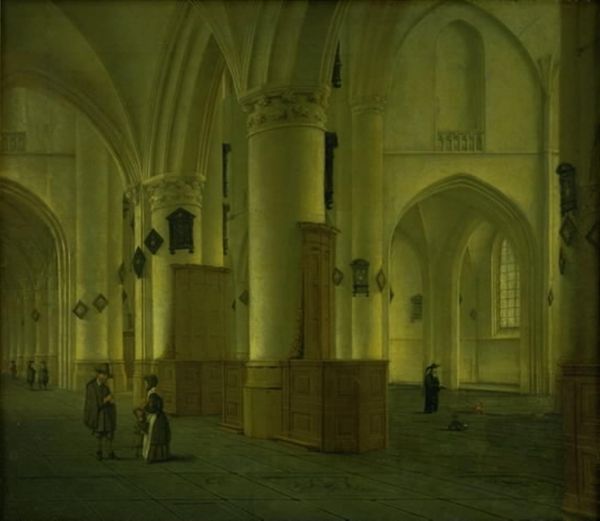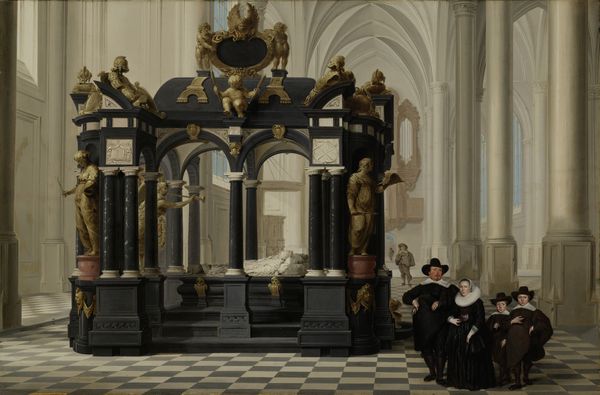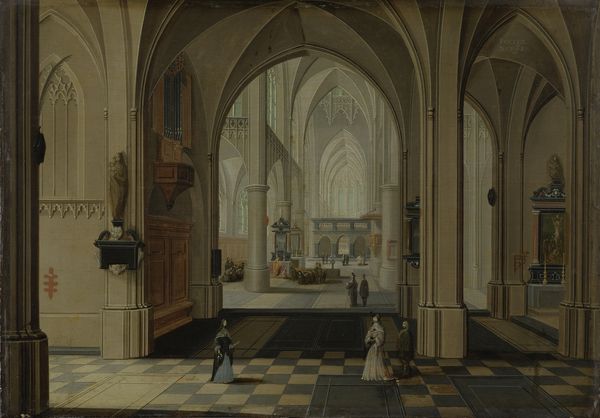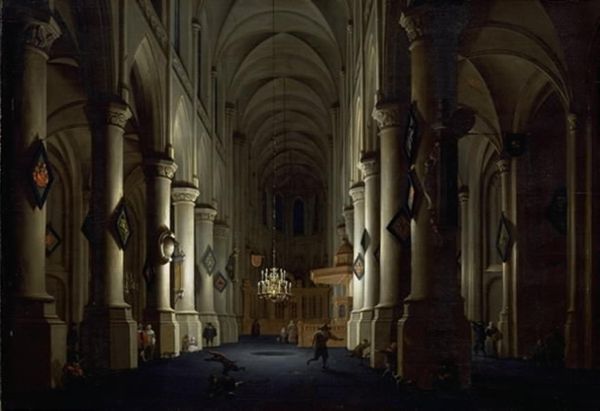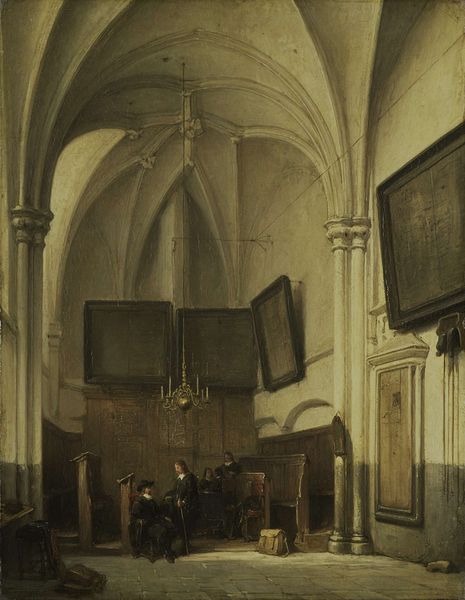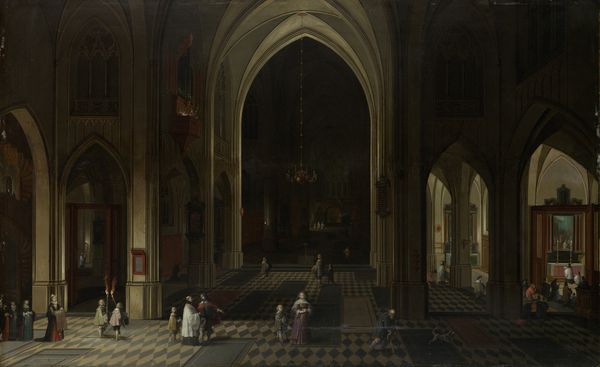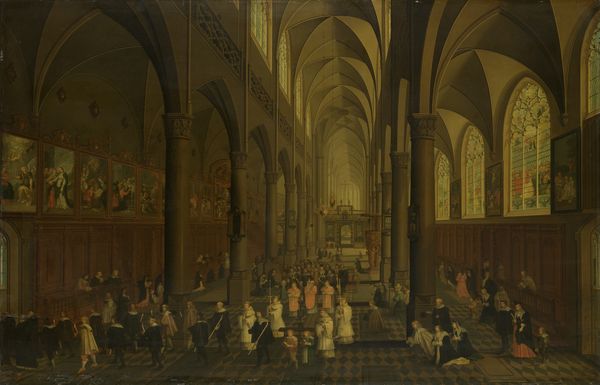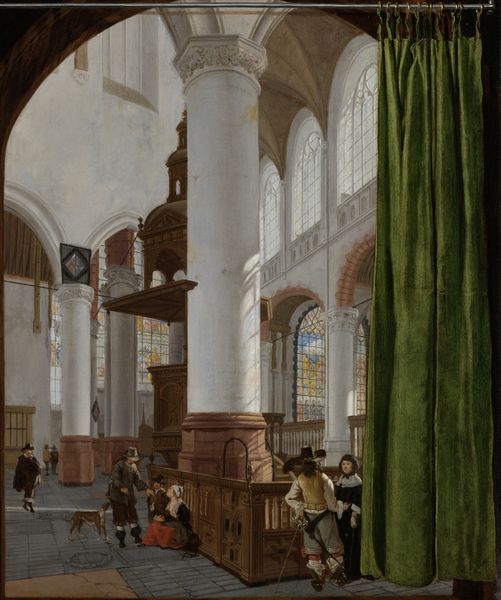
painting, oil-paint, canvas, architecture
#
portrait
#
medieval
#
painting
#
oil-paint
#
canvas
#
romanticism
#
genre-painting
#
history-painting
#
academic-art
#
architecture
#
historical building
Dimensions: 86 cm (height) x 68.5 cm (width) (Netto)
Curator: Standing before us is Dankvart Dreyer’s 1840-1841 oil on canvas, "The Choir of Assens Church", housed here at the SMK. Editor: It’s surprisingly serene, isn't it? The muted light and soaring arches create such a contemplative mood. Curator: Indeed. Let's consider Dreyer's meticulous attention to detail. The interplay of light and shadow, the texture of the stone, even the depicted figures—all rendered with precise strokes. What strikes you about its composition? Editor: The architectural framing—the repetition of arches, the verticality—creates this wonderful sense of depth, drawing you into the sacred space. It almost feels stage-like with the pulpit as its set piece. And who do you think those people in the left side are? Curator: Those figures, scholars likely, prompt questions of the church's role within the community and access to knowledge. Considering its production date, it reflects Romanticism's renewed interest in Medieval architecture. It's all rather controlled isn't it? We aren't swept away like Caspar David Friedrich would prefer us to be. Editor: Controlled is a good word. It reminds me a bit of Dutch Golden Age interiors but obviously with a different cultural intent. How would the everyday parishioner receive a work like this? I mean were they even ever intended to see something like it or was it just something commissioned by the Church to show its majesty? Curator: Perhaps its purpose was multifold. It celebrates a kind of renewed, idealized connection with a specific kind of ecclesiastical authority and perhaps was even accessible to some of the citizens, showcasing the town's assets. But what kind of labor and material resources made an artwork like this available to a 19th-century audience? Who would’ve seen this work outside of an exhibition context, considering it would’ve demanded considerable expenditure? Editor: It's a fascinating glimpse into the era's artistic sensibilities but also prompts questions about access, production and class. Curator: Absolutely, understanding those facets provides even greater insight into the artwork's complex existence and legacy. Editor: It’s far from a perfect artwork, but you certainly see echoes of later movements in the seeds that were planted here.
Comments
No comments
Be the first to comment and join the conversation on the ultimate creative platform.
